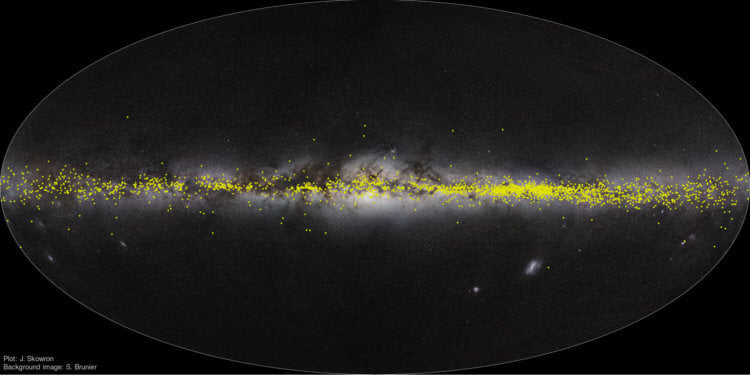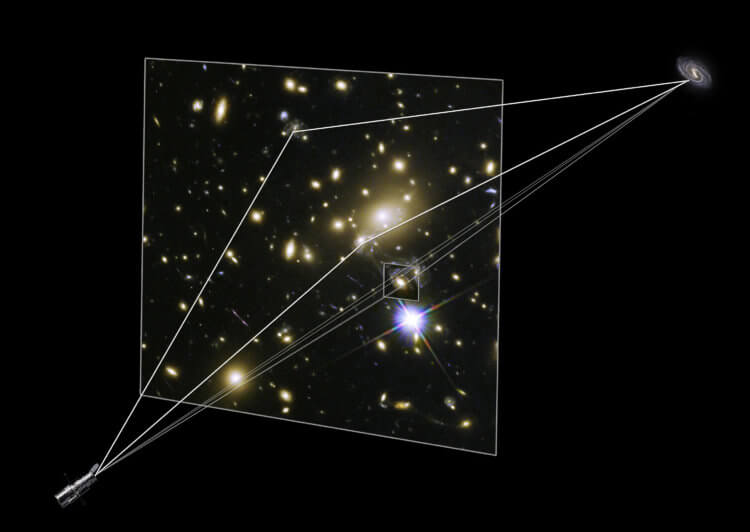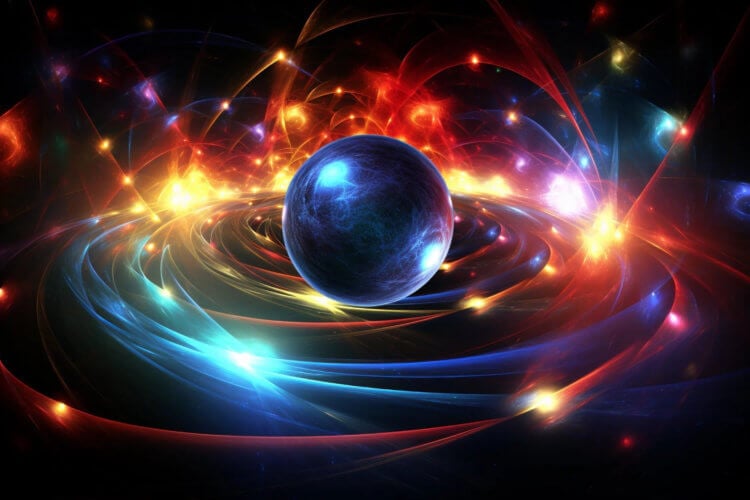The history of mankind is a real saga with many characters. For centuries we have been searching for answers to questions about who we are, where we came from and where we are going. As science and technology developed, more questions became available, but we also learned a lot. It turned out that our planet is a tiny blue dot revolving around the most ordinary star, of which there are countless in the vastness of the Universe. And the more we learn about celestial objects and the structure of space, the less we understand what is happening. Thus, two leading physical theories – general relativity (GTR) and quantum mechanics – work ideally separately, but not together. Moreover, we study distant galaxies in an attempt to understand the structure of the universe and introduce various variables, such as dark matter, designed to explain the greatest mysteries. But there is still no evidence of its existence, just as there is no new physical theory. But why and should we expect a revolution in cosmology? Let's find out!

Can a new theory of gravity answer cosmology's greatest mysteries?
Contents
- 1 What's wrong with cosmology?
- 2 New ideas
- 3 Well-forgotten old
- 4 Is dark matter no longer needed?
What's wrong with cosmology?
Everyone seems to know that cosmology is in crisis. The reason lies in the discrepancy between the Hubble constant. This means that either scientists are doing something wrong, or something unknown is happening in the vastness of the Universe.
Hubble Constantis the number that astronomers use to measure the expansion of the Universe. It was first reported by American astronomer Edwin Hubble, who discovered other galaxies outside the Milky Way and concluded that they are constantly moving away from us. However, the speed at which this happens (and why) is a mystery. Well, every time scientists study the rotation of distant galaxies, they are perplexed.

Our Universe is expanding at an accelerating rate, which is actually quite strange
Here's the thing – stars inside galaxies are held together by gravity – a force of gravity that prevents them from being thrown out into intergalactic space as they spin. The mystery lies in the fact that the most distant parts of the galaxies are moving too quickly without losing stars. The fact that the luminaries are not ejected into interstellar space amazes astronomers and is one of the greatest cosmological mysteries. Some force must be holding the galaxies together, but what this force is and where it comes from is unknown.
You may be interested: Can gravitational waves solve the crisis of cosmology?
At the moment, the best explanation for what is happening is dark matter exerting a gravitational effect on all celestial bodies. The search for this mysterious matter is one of the leading areas of research, but despite years of study and achievements, evidence of the existence of dark matter has still not been found.
New ideas
Fortunately, researchers are looking in different directions – while some are studying dark matter, others are looking for alternative causes of the observed cosmological “problems”. Thus, back in the 1980s, a physicist named Mordecai Milgrom suggested that on a galactic scale, Newton's laws of motion may differ slightly from those observed on Earth.
According to Milgrom, this modified Newtonian dynamics (MOND) may provide an additional gravitational force to hold galaxies together. But, as with dark matter, there is very little evidence to support this idea.

Astronomers are leaning towards the idea of dark matter. But what if they are wrong?
Various studies have looked at what effect MOND might have on the orbits of distant objects such as Pluto or the Pioneer spacecraft. and «Voyager», but there were no encouraging results. Moreover, many astronomers do not like this idea, since it is, in fact, an arbitrary interpretation of Newtonian dynamics (in fact, this is the reason for the widespread interest in dark matter).
Read even more interesting articles in the field of cosmology and physics on our channel in Yandex.Zen – articles that are not on the site are regularly published there!
Now, the situation may change – all thanks to the work of Jonathan Oppenheim and Andrea Russo from University College London, who figured out why Milgrom's MOND idea might be right after all. The work, which has not yet been peer-reviewed, gives MOND a theoretical framework that makes the theory more attractive to astronomers and physicists.The study, published on the preprint server AiRXiv, builds on an idea Oppenheim put forward several years ago to reconcile the incompatibility between the two great foundations of modern physics: quantum mechanics and general relativity. Let us recall that quantum mechanics explains the structure of the Universe on the smallest scales, while general relativity explains the structure on the largest scales.
And, as we have already described more than once, the nature of both theories is completely opposite: quantum mechanics assumes that the Universe is probabilistic in nature, while general relativity implies that it is completely classical. This inconsistency creates a dilemma when it comes to creating a theory of quantum gravity, which physicists have yet to develop.

Quantum gravity is a direction of research in theoretical physics, the goal of which is a quantum description of gravitational interaction.
For more information about quantum gravity, we told here, don't miss it!
Oppenheim's idea is that GTR is a classical theory, but at its core, however, it is stochastic – that is, it has a random character, rather similar toBrownian motion– random movement of a particle suspended in a liquid. This vision allows quantum mechanics and relativity to be unified in a mathematically compatible manner.
From this «well forgotten» approach also follows that gravity for you and me works exactly as Newton described (and as physicists observe). But on a galactic scale, the acceleration due to gravity can change by a small but random amount, as if space-time caused some kind of Brownian motion of masses within it.

We may be misunderstanding gravity, the main driving force of the Universe
< p>We show that the stochastic nature of spacetime generates an additional gravitational force that holds galaxies together. Entropy, controlled by the stochastic cosmological constant, can explain the rotation curves of galaxies, which means there is no need to involve dark matter, write the authors of the scientific work.
Is dark matter no longer needed?
Milgrom's idea (and the authors of the new study) may be a necessary consequence of combining the theory of relativity and quantum mechanics into a single structure. At a minimum, this idea should be taken seriously and a series of scientific experiments should be carried out to test the nature of Newtonian dynamics.
The authors of the work, however, urge caution, pointing out that in addition to the rotation of galaxies, there are other reasons to assume the existence of dark matter. For example, the gravitational mass of distant galaxies acts like a lens, refracting light passing by. And the size of this bend suggests thatdark matter must contributeto this mass.

Physicists take a wide range of approaches to very complex problems, such as combining quantum mechanics with gravity. And this is a very good thing
Thus, before a new, alternative idea becomes widespread, it must be carefully and in detail studied, in particular, through computer simulations of Brownian motion of space-time and its effect on mass. Well, we are not talking about a complete rejection of dark matter at all.
Read also: Astrophysicists have discovered “bridges” made of dark matter. What is it?
It turns out that astronomers have more work to do, because in addition to searching for dark matter both in space and on Earth, attention will also have to be paid to Milgrom’s idea. But this is exactly how science works – the more openly and unbiasedly we look at the Universe, the greater the chance of learning a few more of its secrets.